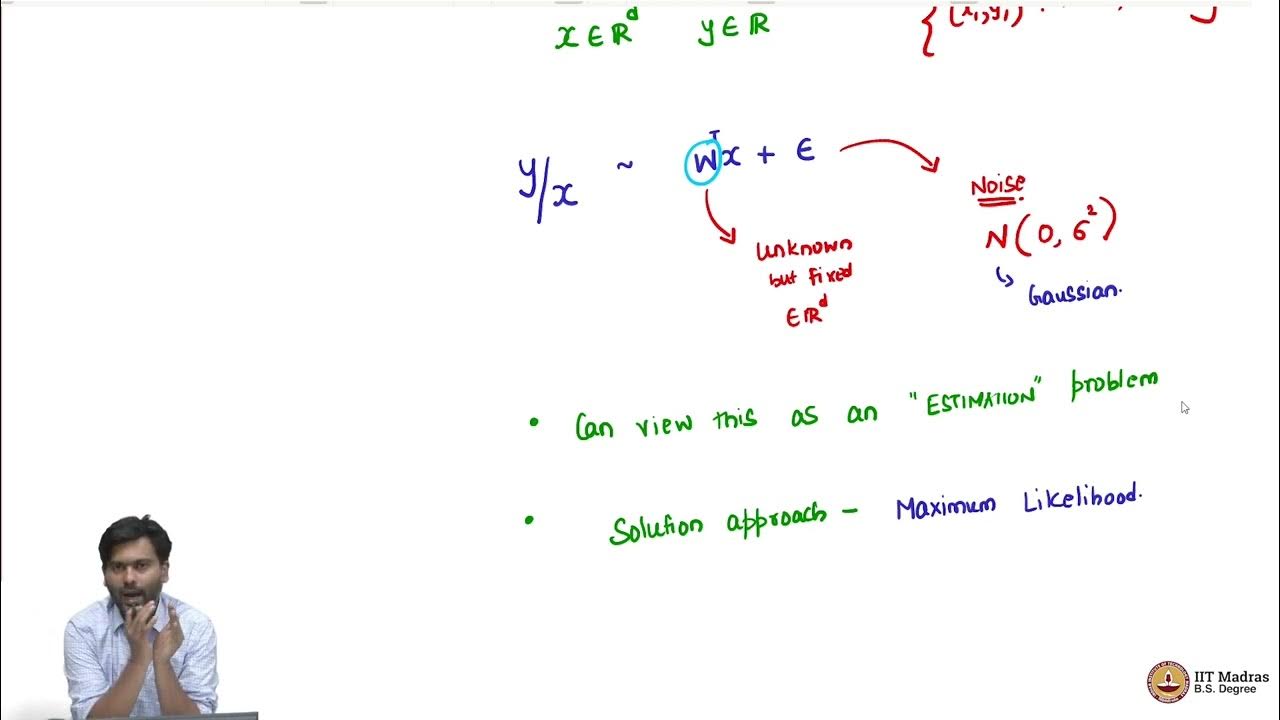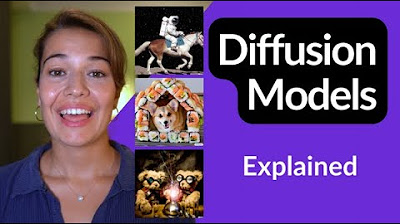What is White Gaussian Noise (WGN)?
Summary
TLDRThis video explains the concept of white Gaussian noise, starting with an overview of the Gaussian distribution. It delves into the nature of noise as a random process, showing how noise samples are taken at regular intervals, each with a distribution centered around zero. The video covers key concepts like autocorrelation and the Fourier transform, demonstrating that white noise has a constant power spectral density across all frequencies. The relationship between variance and the autocorrelation function is also discussed, emphasizing how Gaussian noise calculations tie into spectral density and bit error rates. For further learning, the video encourages viewers to subscribe and visit the creator’s website.
Takeaways
- 😀 White Gaussian noise refers to noise with a zero mean and a constant power spectral density over all frequencies.
- 😀 The Gaussian distribution has a characteristic bell curve shape, with a mean (mu) of zero for white Gaussian noise.
- 😀 Noise is modeled as a random process, where each time sample of the noise is a random variable with its own distribution.
- 😀 In a digital communication system, noise is sampled at regular intervals, often corresponding to the symbol rate.
- 😀 The autocorrelation function of white Gaussian noise is a delta function, indicating that samples are independent and uncorrelated over time.
- 😀 The autocorrelation function for white Gaussian noise has a peak at zero delay, represented by the value n naught / 2.
- 😀 The power spectral density of white Gaussian noise is the Fourier transform of its autocorrelation function, and it is constant across all frequencies.
- 😀 The constant value of the power spectral density is n naught / 2, which represents the average noise power in the system.
- 😀 White noise is called 'white' because, like white light, it contains all frequencies equally, with no frequency dominating.
- 😀 The variance of the Gaussian noise distribution, denoted as Sigma squared, is related to the autocorrelation function at zero delay, which equals n naught / 2.
Q & A
What is White Gaussian Noise?
-White Gaussian Noise (WGN) refers to a type of noise characterized by a Gaussian distribution with a mean of zero. It is called 'white' because, similar to white light, it has a uniform distribution across all frequencies, meaning all frequencies are equally represented.
How is White Gaussian Noise related to random processes?
-White Gaussian Noise can be treated as a random process. This means that noise samples are taken at regular intervals (such as the symbol rate in a digital communication system), and each sample is a random variable drawn from a Gaussian distribution.
What does an autocorrelation function represent in the context of noise?
-The autocorrelation function of a random process measures the relationship between values of the process at different time intervals. For white Gaussian noise, the autocorrelation function is a delta function, indicating that the noise at different time intervals is independent.
Why is the autocorrelation function of white Gaussian noise a delta function?
-The autocorrelation function of white Gaussian noise is a delta function because the noise at different times is independent. This means that the noise at one time point is uncorrelated with the noise at any other time, resulting in a non-zero value only at zero delay.
What does the power spectral density (PSD) tell us about white Gaussian noise?
-The power spectral density (PSD) describes how the power of white Gaussian noise is distributed across different frequencies. For white Gaussian noise, the PSD is constant across all frequencies, reflecting the fact that all frequencies are equally represented.
Why is the height of the delta function labeled as n_naught/2?
-The height of the delta function in the autocorrelation function is labeled as n_naught/2 because the power spectral density of white Gaussian noise is symmetrically distributed across both positive and negative frequencies. The division by 2 accounts for the area under the curve for both sides.
What is the relationship between the variance of the noise and its autocorrelation function?
-The variance of white Gaussian noise is related to the autocorrelation function. Specifically, the variance (denoted as sigma squared) is equal to the value of the autocorrelation function at zero delay (n_naught/2).
Why is the noise called 'white' in the context of White Gaussian Noise?
-The term 'white' refers to the fact that, just as white light contains all the colors of the visible spectrum, white Gaussian noise contains all frequencies in equal proportions. It has a constant power spectral density across the frequency spectrum.
What does the second moment of the Gaussian distribution represent in this context?
-In the context of Gaussian noise, the second moment represents the variance of the distribution, which is the expected value of the squared deviation from the mean. Since the mean is zero, the second moment directly corresponds to the value of the autocorrelation function at zero delay (n_naught/2).
How is the concept of White Gaussian Noise useful in communication systems?
-In communication systems, White Gaussian Noise is often used as a model for background noise, helping to understand the impact of noise on signal transmission. It plays a crucial role in calculating bit error rates, power spectral densities, and other performance metrics in noisy communication environments.
Outlines

Dieser Bereich ist nur für Premium-Benutzer verfügbar. Bitte führen Sie ein Upgrade durch, um auf diesen Abschnitt zuzugreifen.
Upgrade durchführenMindmap

Dieser Bereich ist nur für Premium-Benutzer verfügbar. Bitte führen Sie ein Upgrade durch, um auf diesen Abschnitt zuzugreifen.
Upgrade durchführenKeywords

Dieser Bereich ist nur für Premium-Benutzer verfügbar. Bitte führen Sie ein Upgrade durch, um auf diesen Abschnitt zuzugreifen.
Upgrade durchführenHighlights

Dieser Bereich ist nur für Premium-Benutzer verfügbar. Bitte führen Sie ein Upgrade durch, um auf diesen Abschnitt zuzugreifen.
Upgrade durchführenTranscripts

Dieser Bereich ist nur für Premium-Benutzer verfügbar. Bitte führen Sie ein Upgrade durch, um auf diesen Abschnitt zuzugreifen.
Upgrade durchführenWeitere ähnliche Videos ansehen

Probabilistic view of linear regression

Why π is in the normal distribution (beyond integral tricks)

FEA V29: Gaussian Quadrature

Diffusion models explained in 4-difficulty levels

What are Maximum Likelihood (ML) and Maximum a posteriori (MAP)? ("Best explanation on YouTube")

The Normal Distribution, Clearly Explained!!!
5.0 / 5 (0 votes)
